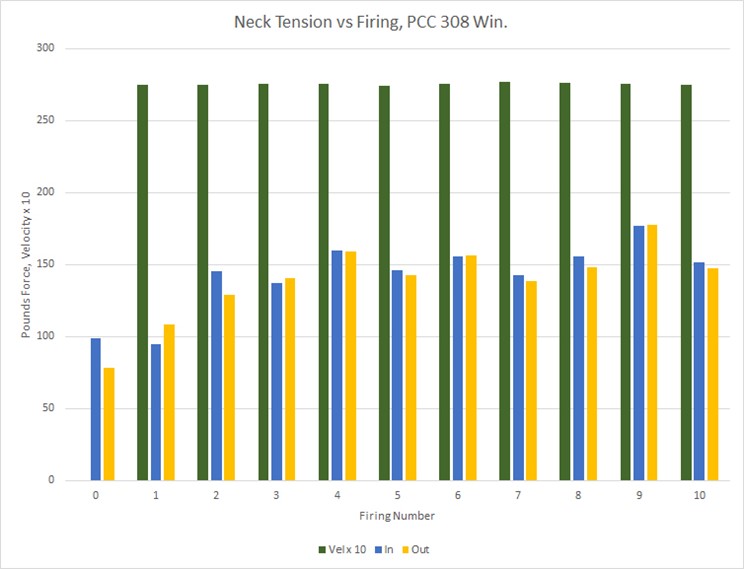What happens to Case Neck Tension after repeated firings?
Do you think neck tension on brass rifle casings increases or decreases with continued firings from the same casing?
At Peterson Cartridge, many of our customers are long-distance, competition shooters who reload and re-shoot our casings over and over again. Neck tension is one of the variables in the formula for winning performance. And all the variables matter to these shooters. In an effort to continue being a valuable resource to these shooters, we set out to answer the question, “What happens to Case Neck Tension after repeated firings?” And, “Does that have any influence over velocity?
”I presumed neck tension would lessen with repeated firings. I supposed that the more times a case was fired the looser the mouth would get… I was wrong.
At Peterson Cartridge we had an instrument maker custom build a casing neck tension measuring instrument for us. It inserts a mandrel the exact size of a bullet into the mouth of a casing. It measures the force in pounds to insert the bullet and to extract it. The insertion and extraction motions are driven by a motor. (With other less expensive instruments the motion is driven by a hand crank. But results from those can vary depending on the vigor of the person running the crank.)
We asked our ballistician to take some of our .308 Win Match casings and fire them 10 times. After each firing he resized the neck. Then he measured the neck tension. Then he had to resize the neck again because inserting the mandrel would have changed the neck. Then he reloaded and fired, and repeated the process nine more times.
The neck tension results are produced on a computer screen, as shown below:

You can see from the chart that neck tension rose after each of the first four firings. Then it somewhat leveled off after that. You can also see that muzzle velocity stayed consistent from the first firing through the tenth.
I asked our ballistician why neck tension increased after the first few firings. He surmised it is from two reasons.
1st. Each time the casing was resized it returned the case to the standard neck dimension.
2nd. As to why the brass in the neck didn’t get softer or mushier, the term-of-art is “brass work-hardens.” Said differently, the more you cold-work brass the harder it gets. Every time you shoot a cartridge the brass expands to the chamber walls. That is a form of cold working. Then, of course, the resizing is also cold working. The cold working hardens the brass.
The long-distance competition shooters we sell to want to know everything they possibly can about the “how” and “why” casings perform the way they do. We at Peterson Cartridge are happy to contribute to the conversation.
About the author
Ben Preston
Ben Preston serves as Inspection and Shipping Manager at Peterson Cartridge. In this role, Ben is responsible for a stringent visual inspection process where he checks that every casing is free of defect. Ben oversees incoming and finished goods inventory and works to meet shipping deadlines.
Ben is an avid hunter and shooter with a passion and appreciation for high quality cartridges.

